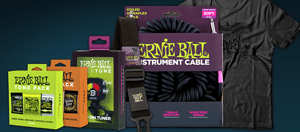
You’ve got the guitar. You’ve got the amp. But, you’re still not getting Your Dream Tone. Is it your playing, or is it something else?
Tone can be a tough beast to tame. Just look at our article on Tone Enhancement to see what we mean.
Stompboxes
Stompboxes, also known as guitar/bass pedals can do more to change the sound of your playing than anything else. Sure, a great guitar will sound better than a lousy one, but it’ll still sound like a guitar.
Stompboxes will allow you to add distortion (which will be better than the distortion built into most amps). Additionally, they will allow you to sound like a synth or allow you to have a delay so long that your playing will only catch up to you after a second or two.
The right stompbox can change your tone so fully that it sounds completely alien. Sometimes this can be used to awesome effect, but other times it can sound bad – so user beware! Just like salt can make your stew taste amazing, too much can make it inedible.
I like to think of stompboxes as having three distinct categories; Effect, Utility, Distortion.
Effect
There are too many different types of effects to name them here. The most common effects are Delay, Reverb, Chorus, Flanger, Wah-Wah, and Tremello.
Utility
Utility stompboxes are things that make our lives a little easier. The primary example here is the humble tuner pedal. Being able to tune your guitar on stage without having to plug into a tuner is great. It will reduce your tuning time and make your session have more fluidity.
Another example of a utility pedal is the loop station. Being able to record loops on the fly and play over them, all without ever having to let go of your guitar can make for an amazing show. Don’t believe us, [Check out Albert Frost].
Distortion
Distortion, in its various forms, is the most common of all stompboxes. From a light distortion to break up your tone to add flavour to your solo to full on, in your face metal distortion.
This category is also home to fuzz pedals and overdrives.
For an in-depth look at how stompboxes work, check out [Stomp Box Basics: How 10 Essential Pedals Work]









